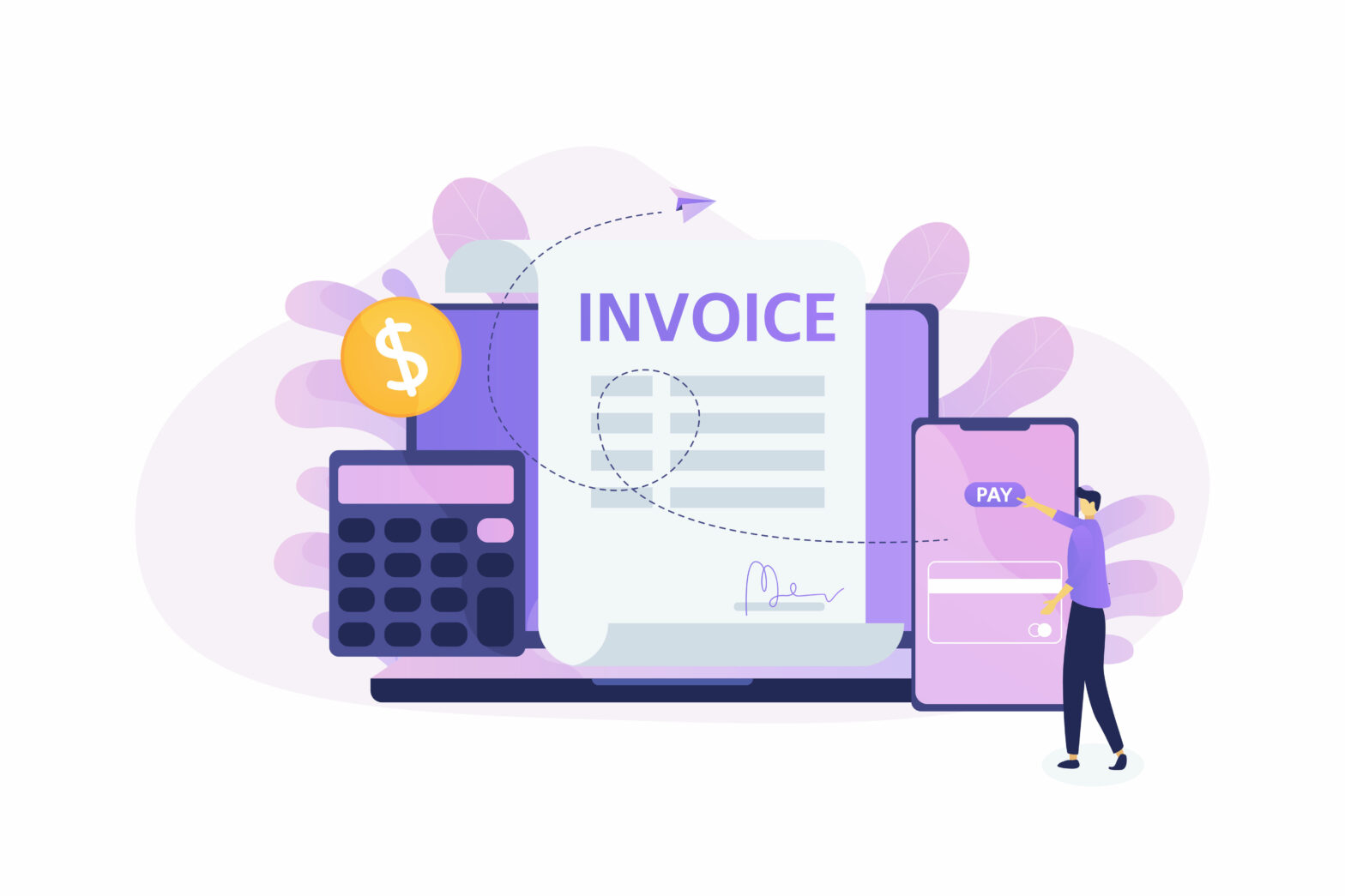If you were to ask pretty much any entrepreneur why they set up their business, the answer will definitely not be so that they could manage payments and a balance sheet. However, like it or not, the success or failure of any business is directly related to how that business manages its cash.
Cash is the lifeblood that flows through the veins of every company – without it, the business simply cannot function, and when it runs out, much like a heart attack, it can sadly be fatal.
Each company must deal with the constant demands of payroll, suppliers, stock, HMRC and the unknown shocks within every economic cycle. Sadly, for some, this can simply be too much. However, while many small businesses fail due to running out of cash, it is also true that many of those businesses are themselves owed money by their customers.
So how can it be that a company goes bankrupt when it is owed money by others?
‘If waiting for invoices to be paid strains your working capital, then invoice finance could well be something to explore’
Cash inflows and outflows
A company’s assets will typically comprise cash, trade receivables (those issued but, as yet, unpaid invoices), accrued income and inventory. The companies with the healthiest balance sheets are those that have strong working capital which can be deployed to take on new customers, staff and inventory to fulfill those new orders, or to see the company through a dip in trading.
Growth can be just as perilous as a couple of quiet months. The first thing that can suffer is the amount of cash in the company, as more and more of it is spent fulfilling ever larger orders, and the time between delivering those orders and being paid for them can be 90 days or longer.
There are two ways to improve working capital: the constant, gradual improvement in the operation to make the cost base as efficient as possible; and the quicker, more immediate injection of cash into the business. Regardless of who you are and what you do, cash is king.
>See also: 15 ways to improve cash flow
How can you inject cash?
There are two ways to inject cash, one is pretty obvious, another less so.
The first is to seek external funding, most likely in the form of a loan. This can be a great option, particularly if the cost of servicing the loan (comprising set up costs and interest payments) is more than covered by the income it generates. However, applying for a loan can be time consuming, the conditions onerous and, as interest rates continue to rise, it is becoming more and more expensive.
There is another way to access capital quickly and that’s to look within your balance sheet. Every company that is trading pretty well will have capital on its balance sheet that is lying dormant in the form of those trade receivables – the issued but as yet unpaid invoices.
What is invoice finance?
Like all great ideas, at its heart invoice finance is a simple proposition. Instead of completing the work and then waiting out the payment terms agreed with your customer, your invoice finance provider will pay you a percentage of the value of those invoices when you raise them. This means you receive at least some of the cash for the work you have completed within as little as 24 hours, boosting working capital and optimising your cash flow.
What is invoice factoring?
Invoice factoring is a way for businesses to fund cash flow by effectively selling their invoices to a third party. Invoice factoring can be provided by independent finance providers, or by banks.
Traditional invoice factoring requires the client to enter into an agreement whereby the factoring company will manage the sales ledger and credit control for a fixed period (also known as a whole-turnover agreement).
In return, the factoring company will advance a percentage of funds of each invoice upfront at the point those invoices are sent to the end customers. The factoring company will take on responsibility for credit control, thereby saving administrative time as well as improving working capital.
What is invoice discounting?
Invoice discounting is similar to factoring in that the client issues invoices for work submitted and sends the invoices to the finance provider. However, most invoice discounting facilities are confidential, in that the end customer is unaware that the company has chosen to have part of the invoice financed. Although this is seen as an advantage, the client retains the responsibility for collecting payment for the invoice, and if the debtor is late, there will be additional charges to pay to the invoice finance provider.
What are the developments in invoice finance?
Invoice finance is not as popular as it should be. This is partly down to a lack of knowledge of what is available, partly due to market perception and in part due to the recent Government-backed initiatives which were loan based.
Established invoice finance providers have historically not done themselves any favours by creating products that are time consuming to apply for, paperwork heavy, costly to manage and opaque in pricing.
When considering a whole turnover agreement, companies have had to sign contracts for at least one year. They pay a monthly subscription fee and then the actual cost of funding the invoices on top, with interest charged at a daily rate. Furthermore, the finance provider will take an active debenture over the company, reducing its ability to apply for further funding. Put simply, it looks and feels like a loan even though it is actually quite different.
However, with the adoption of cloud-based technologies and open banking, the good news is that the market is evolving. There are new, digital platform entrants offering to charge fixed fees which are inclusive of credit control, making the administration far more straightforward and the costs more competitive.
Our company, Hydr, is a good example of this: we fund 100 per cent of invoice values minus a fee that is fixed and fairly priced. Our proposition is purely digital, enabling us to give funding decisions in real time. We include credit control in our fee, and we do not tie our customers in to onerous contracts.
Is invoice finance right for me?
As we enter a period of higher interest rates and greater uncertainty the short answer is yes – there will definitely be a proposition out there that is right for your company.
Businesses choose to use invoice finance rather than extending their borrowings because it provides an advance on the cash already earned, rather than taking on new debt.
If waiting out payments terms on your issued invoices is causing a strain on your working capital, then invoice finance could well be something to explore – far better that than going into financial distress with customers owing you money for work you have delivered.
Hector Macandrew is co-founder of digital invoice finance provider Hydr
Case study: Sauce Shed

Sauce Shed is what is known as a “private label” food manufacturer, developing and manufacturing sauces, jams, chutneys and more for artisan brands, including TV celebrities.
Founded in 2020, it has grown to becomes a £5m business servicing over 300 clients including Nutty Professor and ships out more than a thousand product lines.
Small Business sat down with Sauce Shed managing director Oliver Reylands to talk about invoice finance and why he decided to go with Hydr.
What made you decide to go down the invoice finance route?
We decided to use invoice finance when we realised that a supermarket client was going to take 45 days to settle our invoice. That’s standard practice.
I did a lot of market research and settled on Hydr because it just seemed to fit. The fact that I could pick up the phone and speak to Hector or on of his team directly was important, rather than ‘computer says no’. What’s great about Hydr is that you can actually speak to somebody who understands your business.
Do you ever recommend invoice finance to your clients?
Sure. Because if they sell direct to supermarkets, as we sometimes do ourselves, they are in exactly the same 45-day waiting-for-payment situation. From my point of view, it’s giving my clients room to grow, breathing space. Invoice finance allows the whole supply chain to function relatively seamlessly.
Why not just get a bank loan?
The days of just walking into a bank and getting a loan are over. You can’t just walk into a bank anymore. Invoice finance is faster and more flexible.
Explain to me how Hydr works with Sauce Shed
It’s very simple. You connect Hydr to your accountancy software platform, in our case Xero, and the rest is done mostly automatically. Hydr pays 100 per cent of each invoice, less its fee, and the money appears in our account within three hours of us issuing that invoice. In the old days, a bank would advance you 80 per cent of the invoice upfront and then you’d have to wait. Of course, you’d get the whole amount eventually, but technology has moved on. And what you’re saving in man hours and time when it comes to keeping on top of cash flow makes it totally worth it.
Further reading
The importance of credit control
Looking for finance? SmallBusiness.co.uk is working in partnership with trusted lenders to help you find the best business funding deals. Find out more here.




